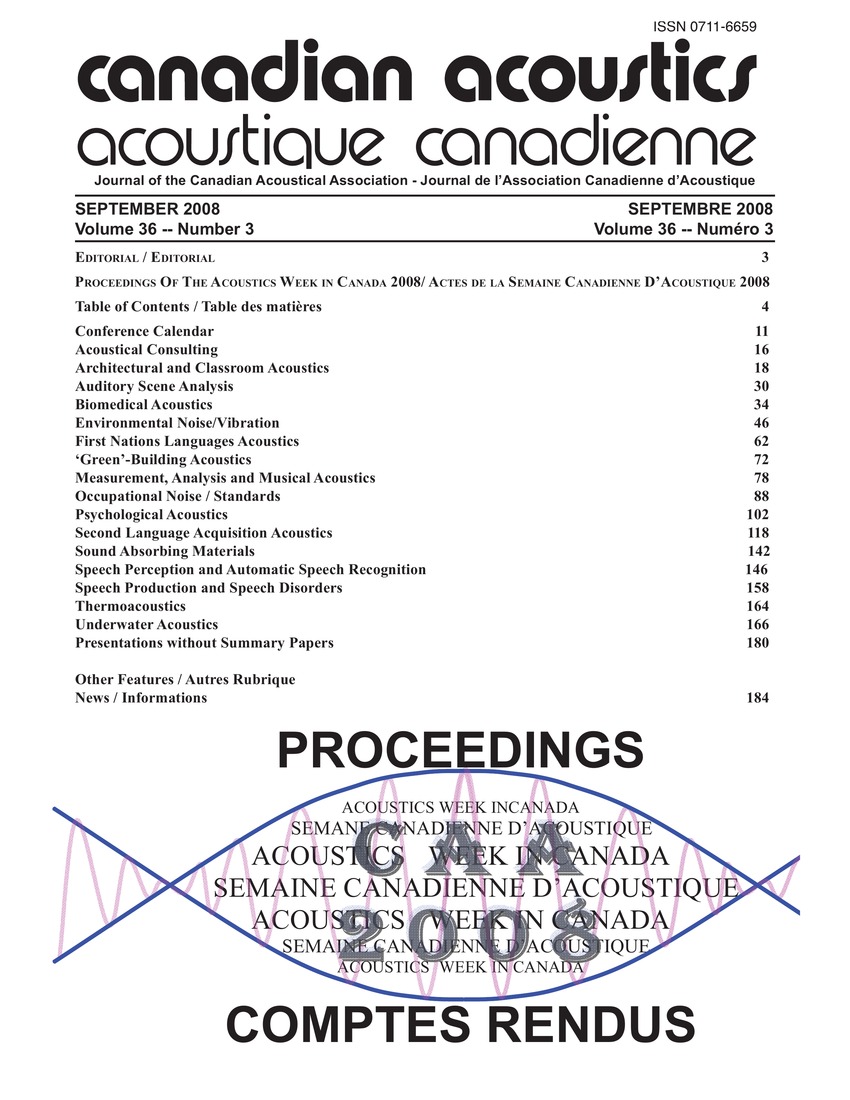Reverberation rooms and spatial uniformity
Keywords:
Absorption, Acoustic noise, Antennas, Building materials, Construction equipment, Materials properties, Low backgrounds, Noise controls, Reverberation chambers, Reverberation rooms, Sound absorptions, Sound levels, Sound powers, Space bounds, Spatial uniformities, Transmission propertiesAbstract
Reverberation rooms are used as test rooms to investigate the level of sound power and to test the space bound hardware including antennas and satellites. These rooms can be used to understand transmission properties of building materials and absorption properties of noise control products. An ideal reverberation rooms need to have adequate volume, suitable shape, small sound absorption, and low background noise level. Two different rooms were used to evaluate the sound level produce by single sinusoidal tones and bands of noise. The reverberation chambers can be used to determine the spatial uniformity of the chamber and the low-frequency cut-off limit of the chamber. It was observed that the spatial uniformity of the chamber sound level can be satisfied for broadband sound levels.Additional Files
Published
How to Cite
Issue
Section
License
Author Licensing Addendum
This Licensing Addendum ("Addendum") is entered into between the undersigned Author(s) and Canadian Acoustics journal published by the Canadian Acoustical Association (hereinafter referred to as the "Publisher"). The Author(s) and the Publisher agree as follows:
-
Retained Rights: The Author(s) retain(s) the following rights:
- The right to reproduce, distribute, and publicly display the Work on the Author's personal website or the website of the Author's institution.
- The right to use the Work in the Author's teaching activities and presentations.
- The right to include the Work in a compilation for the Author's personal use, not for sale.
-
Grant of License: The Author(s) grant(s) to the Publisher a worldwide exclusive license to publish, reproduce, distribute, and display the Work in Canadian Acoustics and any other formats and media deemed appropriate by the Publisher.
-
Attribution: The Publisher agrees to include proper attribution to the Author(s) in all publications and reproductions of the Work.
-
No Conflict: This Addendum is intended to be in harmony with, and not in conflict with, the terms and conditions of the original agreement entered into between the Author(s) and the Publisher.
-
Copyright Clause: Copyright on articles is held by the Author(s). The corresponding Author has the right to grant on behalf of all Authors and does grant on behalf of all Authors, a worldwide exclusive license to the Publisher and its licensees in perpetuity, in all forms, formats, and media (whether known now or created in the future), including but not limited to the rights to publish, reproduce, distribute, display, store, translate, create adaptations, reprints, include within collections, and create summaries, extracts, and/or abstracts of the Contribution.


